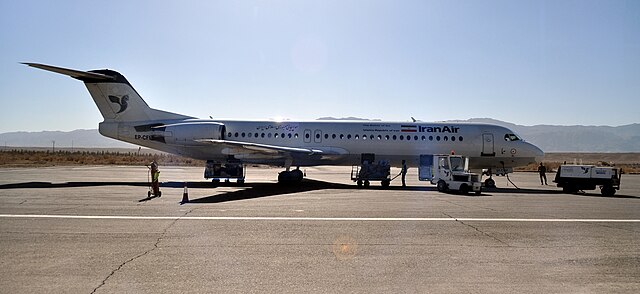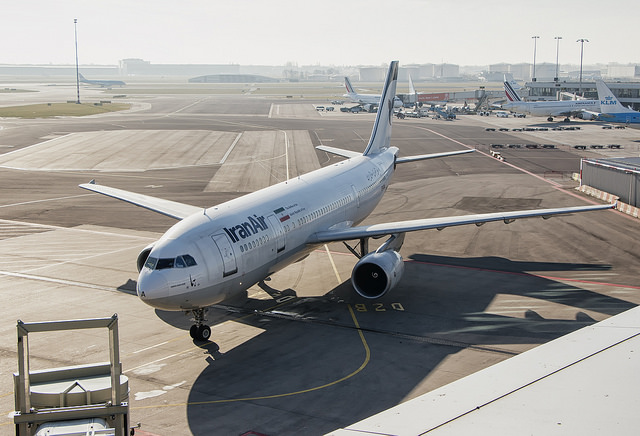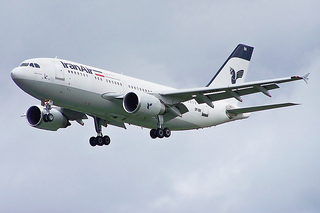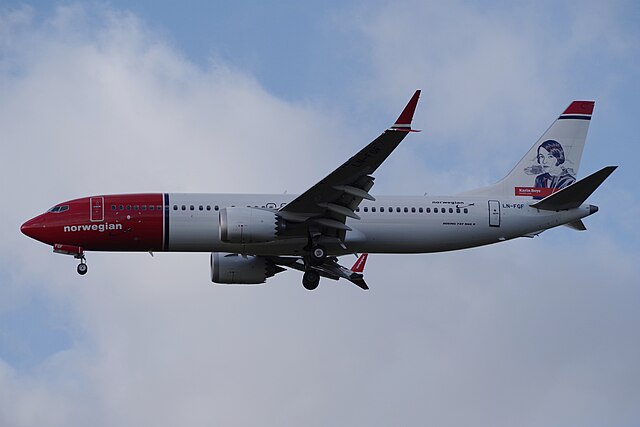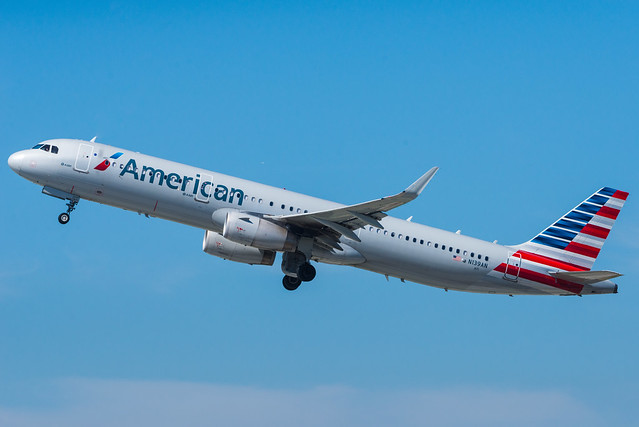Iran AT72 at Tehran on Aug 26th 2019, tail strike on landing
Last Update: August 19, 2020 / 20:19:01 GMT/Zulu time
Incident Facts
Date of incident
Aug 26, 2019
Classification
Incident
Cause
Tail strike on landing
Airline
Iran Air
Flight number
IR-3332
Departure
Rasht, Iran
Destination
Tehran Mehrabad, Iran
Aircraft Registration
EP-ITD
Aircraft Type
ATR ATR-72-200
ICAO Type Designator
AT72
Airport ICAO Code
OIII
Iran's CAO reported the occurrence was preliminarily rated an incident, an investigation has been opened. The damage is being assessed with the assistance by the aircraft manufacturer to correctly rate the occurrence. The cockpit was staffed by a pilot in training, a training captain and a safety first officer. The pilot in training was pilot flying. The training captain reported the approach was fully stabilized until about 50 feet AGL, then the nose of the aircraft pitched down and a high rate of descent developed, the training captain intervened and attempted to correct, however, could not prevent the hard touch down and tail strike.
On Aug 19th 2020 Iran's AIB released their final report concluding the probable cause of the incident was:
excessive pitch-up of the airplane while landing with a tailwind by dual input orders of pilots, which resulted in a tail strike following a bounced landing. The human error arose from the dual input control column on opposite orders, which occurred from altitude of 15 ft. from the runway.
The AIB reported the captain (38, ATPL/TRE/TRI, 7,700 hours total, 1,670 hours on type) was pilot monitoring, the first officer (29, CPL, 183 hours total, 22 hours on type) was pilot flying, a safety pilot occupied the observer's seat.
The AIB summarized the sequence of events:
The first officer was pilot flying (PF), and the captain was pilot monitoring (PM) that took the aircraft control at touchdown time. The captain was the training pilot, conducting an annual line check along with a six-month line check of the first officer. The aircraft landed on Mehrabad Airport runway 29L at 15:43L (11:13 UTC) but had hard landing followed by a tail strike onto the runway surface. The aircraft rolled out without further incident and taxied to the Iran Air ramp, where passengers disembarked normally.
The aircraft touched down at a pitch angle of +6.7° and a vertical acceleration of +3.1G.
The aircraft received structural damage with a number of stringers and frames bent and fractured.
The AIB summarized the analysis of the FDR:
11:12:36 F/O was PF, AC at 100ft RALT, speed stabilized at 110 kts; Final approach vertical profile respected, FPA ~2.6° Aircraft
11:12:40 above runway threshold, 41 ft RALT, Pitch -0.6° PLA 42°
11:12:41 Speed 109 kts, RALT 25 ft. reducing progressively; Pitch ~0°, F/O pulled on CC to start the flare => pitch increased; commencing dual input at 15 ft.
11:12:42 PLA 37°, speed 105 kts, R Alt 9 feet Pitch = 1.3, Captain also pulled on CC => Dual input during 0.2s => strong increase of pitch
11:12:43 Captain pushed on CC => opposite input during 0.2s Main LDG impact on ground (210 meters of runway THR)Followed by a Tail strike, Max recorded Pitch = 6.8° Tail strike for pitch > 5.94° when MLG compressed, Max VRTG = 3.13g, IAS = 104 kts, F/O reduced effort on CC
11:12:44 PLA stabilized at 35°, IAS stabilized at 99 kts, Captain pulled again on CC Then F/O also pulled on CC => Dual input during 0.3s, Pitch decreased to -1° Both pilots reduced effort on CC
11:12:45 Main and nose LDG impact on ground, (Second Bounce) Max VRTG = 1.84g, Pitch increase to 3.1°,
11:12:46 Main LDG impact on ground, (3rd bounce), VRTG = 1.26g, IAS decrease to 94ft No more effort on CC, Pitch decrease to 0.47°
11:12:47 Main and nose LDG impact on ground (4th bounce), Max VRTG = 1.1g
11:12:48 Main and nose LDG impact on ground (5th bounce), Max VRTG = 1.13g, Pitch ~0°, PLA reduced from 36° (flight Idle) to 20° (Ground Idle)
11:12:49 Aircraft stabilized on ground progressively
11:13:10 Aircraft Stopped.
The AIB analysed:
The Aircraft took off from RWY 27 of Rasht Airport at 10:13 UTC and during interview with F/O, he reported that “flight control (Horizontal Stabilizer) was too stiff for rotation during airborne” which was not confirmed by the FDR data. After departure, the flight continued to FL170. All approach briefing was done according to ATIS before TOD.
The flight was cleared to Radar Vector for joining ILS 29L Mehrabad Airport and flight continued in manual mode (AP Off) on the captain's order from about 10DME for training purposes. The vertical profile of the flight shows that flight continued a bit below 3° line based on ILS Profile. According to approach sequence, flight must continue high speed for more separation between successive flights so the flight speed was too high above 800 ft. RALT but the speed stabilized (110 kts) below 400 ft. RALT.
At 11:10:29 UTC, TWR controller instructed the pilot to maintain minimum approach speed due to aircraft (MD) on RWY 29L, which was acknowledged by the pilot. (According to the Radio communication record between controller and pilot on 118.1 frequency) and then at 11:11:32 UTC, he received landing clearance.
According to the FDR, the aircraft was flared at about 30ft. and power lever reduced to flight idle. Meanwhile, the captain sensed that the rate of descend did not decrease, so according to the captain's report, he intervened and attempted to correct and called out, “I have control” and increased pitch attitude to 6.7 Deg. more than normal altitude angle as 5.94 Deg. by pulling CC just before touch down and F/O pulling CC too however, he could not prevent the hard touch down and tail strike.
After that, the aircraft landed on runway. So, the captain again called “I Have control” to stop the aircraft on the runway and after stopping aircraft according to the purser report cabin was secure and normal. Finally, the aircraft continued taxing to Iran Air Ramp and passengers were disembarked.
Metars:
OIII 261300Z 18008KT 9999 FEW040 35/M03 Q1015 A2999 NOSIG=
OIII 261230Z 15008KT 9999 FEW040 35/M02 Q1015 A2999=
OIII 261200Z 20010KT 9999 FEW040 35/M03 Q1015 A2999=
OIII 261130Z 26010KT 9999 FEW040 35/M03 Q1015 A2999=
OIII 261100Z 23008KT 9999 FEW040 35/M03 Q1015 A3000=
OIII 261030Z 18004KT 9999 FEW040 34/M01 Q1016 A3001=
OIII 261000Z 18010KT 9999 FEW040 34/M01 Q1016 A3003 NOSIG=
OIII 260930Z 16006KT 9999 FEW040 33/M02 Q1017 A3004=
OIII 260900Z 21006KT 9999 FEW040 32/M02 Q1017 A3005=
OIII 260830Z 22008KT 9999 FEW100 32/M00 Q1017 A3005=
OIII 260800Z 19008KT 9999 FEW100 32/M02 Q1017 A3006 NOSIG=
Incident Facts
Date of incident
Aug 26, 2019
Classification
Incident
Cause
Tail strike on landing
Airline
Iran Air
Flight number
IR-3332
Departure
Rasht, Iran
Destination
Tehran Mehrabad, Iran
Aircraft Registration
EP-ITD
Aircraft Type
ATR ATR-72-200
ICAO Type Designator
AT72
Airport ICAO Code
OIII
This article is published under license from Avherald.com. © of text by Avherald.com.
Article source
You can read 2 more free articles without a subscription.
Subscribe now and continue reading without any limits!
Read unlimited articles and receive our daily update briefing. Gain better insights into what is happening in commercial aviation safety.
Send tip
Support AeroInside by sending a small tip amount.
Related articles
Iran F100 near Tabriz on May 24th 2024, lightning strike, electrical problems and loss of cabin pressure
An Iran Air Fokker 100, registration EP-CFM performing flight IR-455 from Tehran Mehrabad to Tabriz (Iran) with 101 passengers and 9 crew, was…
Iran A306 at Tabriz on Oct 23rd 2023, smoke in cockpit and cabin
An Iran Air Airbus A300-600, registration EP-IBA performing flight IR-718 from Istanbul (Turkey) to Tehran Imam Khomeini (Iran), was enroute at FL330…
Iran A313 near Tehran on Jun 7th 2022, turbulence injures 2
An Iran Air Airbus A310-300, registration EP-IBK performing flight IR-718 from Istanbul (Turkey) to Tehran Imam Khomeini (Iran) with 200 passengers…
Iran F100 near Isfahan on Mar 4th 2021, hijack averted
An Iran Air Fokker 100, registration EP-CFM performing flight IR-334 from Ahwaz to Mashad (Iran) with 63 passengers and 4 crew, was enroute near…
Iran F100 at Tehran on Sep 14th 2016, nose gear collapsed during taxi
An Iran Air Fokker 100, registration EP-CFP performing flight IR-212 from Tehran Mehrabad to Birjan (Iran), was taxiing for departure still on the…
Newest articles
Norwegian B38M at Malaga on Nov 22nd 2025, another aircraft on landing runway
A Norwegian Air Shuttle AOC Boeing 737-8 MAX, registration LN-FGF performing flight DY-1800 from Oslo (Norway) to Malaga,SP (Spain) with 189 people…
American A321 near Houston on Nov 23rd 2025, fumes on board
An American Airlines Airbus A321-200, registration N139AN performing flight AA-2118 from Orlando,FL to Phoenix,AZ (USA), was enroute at FL320 about…
Subscribe today
Are you researching aviation incidents? Get access to AeroInside Insights, unlimited read access and receive the daily newsletter.
Pick your plan and subscribePartner

ELITE Simulation Solutions is a leading global provider of Flight Simulation Training Devices, IFR training software as well as flight controls and related services. Find out more.
SafetyScan Pro provides streamlined access to thousands of aviation accident reports. Tailored for your safety management efforts. Book your demo today
AeroInside Blog
Popular aircraft
Airbus A320Boeing 737-800
Boeing 737-800 MAX
Popular airlines
American AirlinesUnited
Delta
Air Canada
Lufthansa
British Airways
